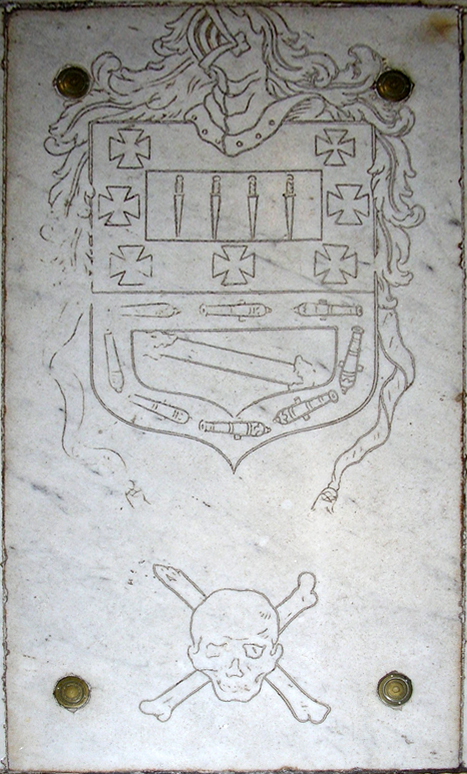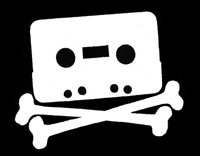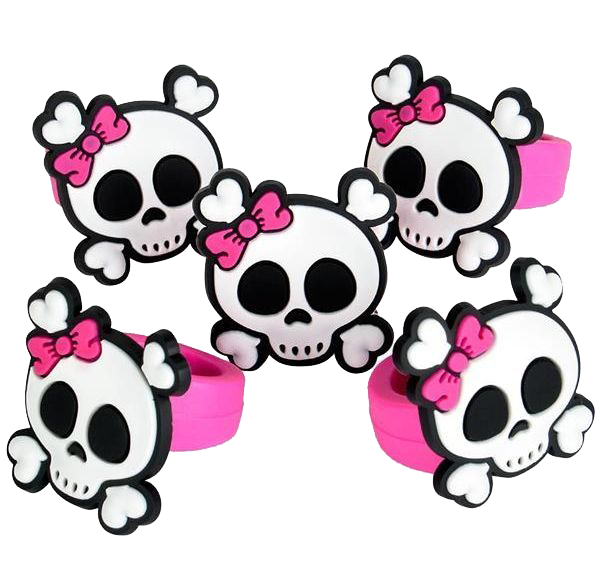|
|
|
|
The skull and cross-bones
|
Although a long-standing emblem of mortality depicted on the Master Mason tracing board, the skull and cross-bones alone is not appropriate as an emblem of Freemasonry.1 The skull, and other emblems of mortality, play a key rôle in a significant moment of the drama of the Master Mason initiation—and in certain concordant body rituals—but it is only in context with the lectures and ritual that this memento mori, or reminder of mortality, has masonic significance.
Taken out of context, this emblem has many meanings that are not compatible with Freemasonry, like piracy. While European and North African pirates of the seventeenth and eighteenth century flew flags depicting skeletons, winged hourglasses, sword-pierced hearts, skulls, and skull and bones, it is the skull and cross-bones image that is most closely identified with pirates.
|
 Spanish corsair, and non-mason, Amaro Rodriguez-Felipe y Tejera Machado (1678-1747), was a privateer who obtained certification of nobility and royal arms in 1727 for his rôle in attacking ships belonging to enemies of the Spanish Crown. His tomb in the Church of Santo Domingo de Guzmán in La Laguna displays the square and cross-bones.
Spanish corsair, and non-mason, Amaro Rodriguez-Felipe y Tejera Machado (1678-1747), was a privateer who obtained certification of nobility and royal arms in 1727 for his rôle in attacking ships belonging to enemies of the Spanish Crown. His tomb in the Church of Santo Domingo de Guzmán in La Laguna displays the square and cross-bones.
 "Home Taping Is Killing Music" (1981), later adopted by the filesharing website, Pirate Bay.
"Home Taping Is Killing Music" (1981), later adopted by the filesharing website, Pirate Bay.
|
Some Freemasons believe that the skull and cross-bones were borrowed from Freemasonry by early privateers who were Freemasons. History does not support this opinion. English privateers, in the main, flew a variant of the Union Jack. The first reported use of the skull displayed on a flag is by Barbary pirates, while in 1700 Emanuel Wynn, a French pirate of the late seventeenth century, is the first European reported to fly what was later called the Jolly Roger. There is no evidence that he was a Freemason. Other Freemasons believe that the Knights Templar flew a skull and cross-bones flag, basing this belief on an imaginative legend created in the eighteenth century to connect Freemasonry with the Crusades. There is no documentation of any ship, boat, or encampment of Knights Templar flying a skull and cross-bones flag. Such stories are fantasies.2
This identification with piracy has led to a popular identification of the emblem with outlawry and anti-social behaviour in general. The symbol has become so ubiquitous in contemporary popular culture that it can be found in the children's animated cartoon, My Little Pony, as a "cutie mark", and sold as children's hair barrettes and baking decorations. To children it is a symbol of autonomy and disobeying their parents, to teenagers it is a symbol of loud and discordant music or resistance to perceived oppression, to anarchists it is a symbol of "breaking all the rules" and to anyone with a passing awareness of motorcycle club culture, it is a symbol of the supremacy of the ego and an identification with nihilistic destruction.
|
 Pink Pirate Cupcake Decorating Rings (2020).
Pink Pirate Cupcake Decorating Rings (2020).
 Ghost Rider gives his soul to Satan (1971).
Ghost Rider gives his soul to Satan (1971).
|
To add flames to the emblem only reinforces the negative implications. Flames either harken back to that motorcycle club culture3 or those counter cultures of self-identified outsiders and rebels, which in recent years has become increasingly mainstream, or reference the inferno of Hell. Neither are suitable or appropriate to identify with Freemasonry.
To place a skull or skull and cross-bones within the square and compasses further demeans and twists the masonic lessons contained within this masonic emblem. The square and compasses comprises the principal emblem of Freemasonry with specific meanings laid out in the ritual. The space contained within them is historically to be used for depictions of deity: the letter G, a five pointed star, a pentagram, a glory of radiating lines, the Hebrew Yodh, a triangle, or other symbol of deity, eternity or "that point within a circle".
While many Freemasons may wish to depict their Freemasonry in more contemporary, popular, "cool" ways, the skull and cross-bones is not the way to do it. It obscures our message and distorts our understanding of who we are and what we are striving to become.
1. Catechisme Des Francs-Maçons, 1744. The first recorded depiction of a tracing board in a French exposure.
2 David Childress, Pirates and the Lost Templar Fleet. (2003). A good example of fiction being presented as history.
3. See drag-racing artist Pete Millar's work in CARtoons magazine from 1959, and Ghost Rider on the cover of Marvel Spotlight #5 (August 1971).
|
|